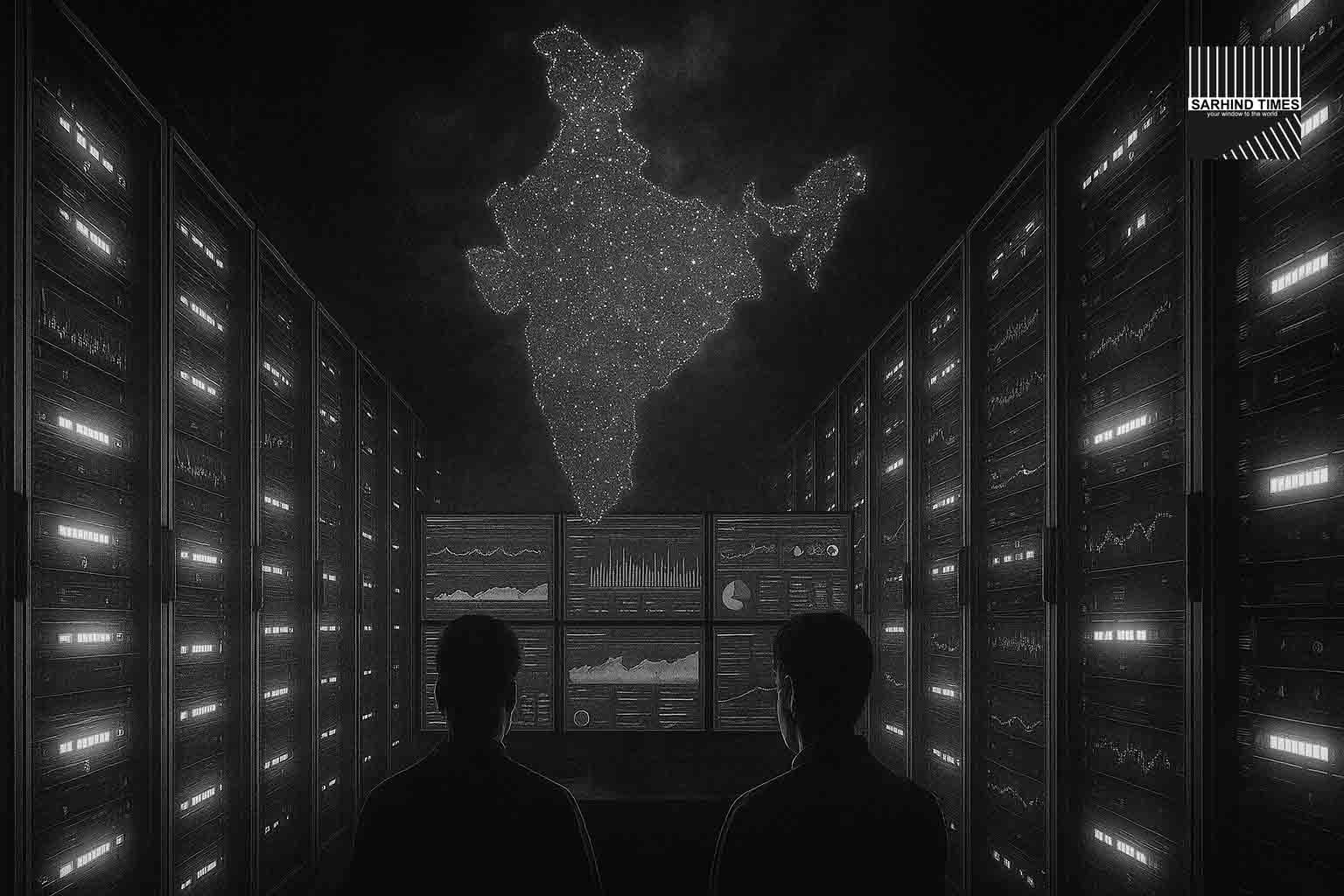The government’s affordable compute initiative marks a historic leap toward AI self-reliance. Twelve Indian firms are building large-scale foundation models under a national framework that promises inclusion, transparency, and innovation at global scale.
New Delhi | October 11, 2025
India has entered a decisive phase in its artificial intelligence (AI) journey. A new government update confirmed that twelve domestic firms are training foundation models using a shared compute network of nearly 38,000 GPUs, made available at an unprecedented subsidized rate of ₹65 per hour.
The initiative is part of India’s broader “IndiaAI Mission”, designed to democratize AI access, reduce infrastructure bottlenecks, and foster local innovation that rivals global tech giants.
The government has also set a timeline to launch a national large language model (LLM) by end-2025, reinforcing its ambition to make India not just an AI adopter but an AI creator.
The Big Leap: Compute Access for All
Until recently, India’s AI ecosystem was constrained by the high cost of computational power, often forcing startups and universities to depend on expensive cloud credits from foreign providers.
Now, through the National Compute Fabric (NCF)—a distributed, government-backed AI supercomputing grid—AI builders across academia, startups, and enterprises can rent GPU clusters for a fraction of the global cost.
“Affordable compute is the new electricity,” said Rajeev Chandrasekhar, Minister of State for Electronics & IT.
“With ₹65/hour GPU access, we are levelling the field for Indian innovators. The next ChatGPT or Stable Diffusion could be built here, in Indian languages, for Indian users.”
The NCF integrates hardware contributions from public and private players, pooling GPUs from domestic datacenters and cloud firms under one AI-ready fabric accessible via a unified API.
The 12 Pioneering Firms
Among the twelve companies developing foundation models are some of India’s most promising AI ventures and research leaders. While official names were not disclosed in the public note, industry insiders point to a mix of AI research labs, cloud startups, and enterprise players focusing on language, vision, and multimodal AI.
Each firm is working on a distinct use-case:
- Language models trained on multilingual Indian corpora.
- Healthcare and agriculture AI systems focused on diagnostics and crop intelligence.
- Financial and legal models optimized for document automation and compliance.
- Civic AI assistants to power governance, citizen services, and policy analytics.
The government has tied the initiative to its AI for Bharat and Digital India missions, ensuring outputs serve public as well as private objectives.
Democratizing Compute: A Global First
The ₹65/hour GPU pricing has stunned global observers, undercutting comparable costs in the U.S. and Europe by nearly 90%.
By leveraging domestic datacenter capacity, renewable energy credits, and direct procurement partnerships, India has created what experts call a “computational equalizer”.
“This move transforms India from an AI consumer to an AI infrastructure nation,” said Dr. Anupam Sharma, AI policy researcher at IIT Delhi.
“No other developing economy has scaled access to compute this cheaply, this transparently.”
The policy ensures that small research teams, university projects, and rural innovation hubs can all access GPUs through a pay-as-you-go model, removing one of the biggest barriers to AI experimentation.
India’s National LLM: The 2025 Vision
At the heart of this initiative is India’s plan to develop its own large language model (LLM)—a foundational AI trained on Indian data, languages, and governance principles.
The National LLM project aims to:
- Support 22 Indian languages and multiple dialects.
- Integrate government datasets responsibly for civic AI applications.
- Enable public APIs for startups to build on.
- Uphold ethical and safety standards guided by the Digital India Charter.
Officials from the Ministry of Electronics & Information Technology (MeitY) confirmed that pilot LLMs are already in the training phase, with open beta access expected by Q3 2025.
“India cannot rely solely on foreign models,” said Secretary S. Krishnan (MeitY).
“Our languages, our data, our contexts require indigenous innovation. The National LLM will ensure that India’s AI narrative is written in its own voice.”
Bridging the AI Divide: Inclusion and Governance
The initiative’s emphasis on safety, inclusion, and governance distinguishes it from purely commercial AI projects elsewhere.
All participating entities are required to align with AI Ethics Guidelines 2024, focusing on fairness, explainability, and bias mitigation.
AI systems trained under this framework must pass social impact audits assessing their fairness across caste, gender, and linguistic diversity.
The government has also proposed a National AI Oversight Board, bringing together experts in law, technology, and human rights to ensure accountability.
“India’s AI is not just about competition; it’s about conscience,” said Dr. Neelima Tandon, policy advisor at NITI Aayog.
“We want to build machines that are not only intelligent, but also humane.”
Public Sector Pilots: From Villages to Satellites
AI is being integrated across India’s ministries and state departments:
- Agriculture: Predictive crop analytics and pest detection using satellite imagery.
- Healthcare: AI-aided radiology and multilingual telemedicine tools.
- Education: Personalized tutoring in regional languages for rural schools.
- Urban governance: Smart water management and waste monitoring.
By connecting these pilots to the new compute fabric, the government hopes to reduce processing time, improve data security, and encourage co-development between academia and bureaucracy.
Startups at the Core of the Revolution
Over 400 startups have reportedly registered interest in accessing the national GPU pool.
These range from language tech firms building chatbots in Tamil and Assamese, to AI-driven agritech ventures that use drone imagery for yield prediction.
Aarav AI Labs, a Bengaluru-based startup, said the move will halve their cloud costs.
“We used to spend nearly ₹5 lakh a month on training runs,” said founder Rohit Menon. “Now we can train larger models locally, and in Indian languages. This is game-changing.”
Industry analysts believe the initiative could boost AI-led GDP contribution by up to $200 billion by 2030, transforming India into a net exporter of AI solutions.
Academic Push: AI Research for the People
The Indian Institutes of Technology (IITs) and IIITs are key beneficiaries of the initiative. Through shared research credits, professors and PhD students can now train large datasets without relying on foreign grants.
Collaborations are underway between IIT Madras, IISc Bengaluru, and NASSCOM’s AI CoE to build open-source datasets and benchmark suites for multilingual NLP, low-resource speech recognition, and AI governance studies.
This academic participation ensures that AI progress is open, peer-reviewed, and inclusive, not locked behind corporate walls.
Global Implications: India as AI Partner, Not Follower
By scaling compute access and indigenous model training, India positions itself as a global south alternative in AI geopolitics.
Nations in Africa, ASEAN, and Latin America are already in talks with India to replicate its low-cost AI infrastructure model.
“India’s framework combines affordability with ethics,” noted World Bank’s Digital Development Director, Maria Garza.
“This could redefine how developing nations participate in the AI economy.”
In contrast to the US–China duopoly, India’s model emphasizes collaboration, transparency, and shared benefits.
Challenges: Power, Data, and Policy Speed
Experts caution that scaling AI infrastructure across 1.4 billion citizens comes with hurdles.
- Energy Demand: AI compute is power-intensive. Expanding to 38,000+ GPUs requires reliable green energy integration.
- Data Localization: Ensuring high-quality, unbiased Indian data while respecting privacy.
- Regulatory Pace: Balancing innovation with timely oversight to avoid misuse.
Despite these challenges, India’s coordinated approach—combining government support, private participation, and academic research—is seen as structurally sound and sustainable.
AI for Good: The Ethical Imperative
The Press Information Bureau (PIB) emphasized that inclusion and public good remain core objectives.
Projects are being encouraged in:
- Accessible AI tools for the differently-abled.
- Voice-to-text services for underrepresented languages.
- Climate-resilience models for farmers and disaster management.
“Artificial Intelligence must amplify human potential, not replace it,” said Minister Chandrasekhar.
“Our goal is AI that listens to everyone, speaks every language, and serves every citizen.”
Industry Reaction: Enthusiasm Meets Realism
The move has been welcomed by top tech associations, though some urge patience on execution timelines.
NASSCOM described it as “the single most important enabler of AI growth since the internet.”
CII’s DeepTech Council highlighted the need for parallel investments in AI-skilled workforce and semiconductor design.
Private cloud providers, including Reliance Jio Cloud and Yotta Infrastructure, are expected to contribute capacity to the compute pool under partnership models.
Investor Sentiment: Bullish on IndiaAI
The AI infrastructure announcement has already triggered investor optimism. Venture capital firms such as Blume Ventures, Lightspeed, and Peak XV are scouting early-stage startups aligned with the IndiaAI vision.
A senior VC commented anonymously:
“When compute becomes affordable, innovation becomes exponential. We’re entering the Indian AI decade.”
Stock market analysts expect listed tech majors—like TCS, Tech Mahindra, and Persistent Systems—to benefit as demand for AI integration surges across sectors.
Timeline and Next Milestones
| Phase | Key Action | Target Completion |
| Phase 1 (Q4 2024) | Launch of Compute Access Portal | ✅ Completed |
| Phase 2 (Q2 2025) | Training of 12 Foundation Models | In Progress |
| Phase 3 (Q3 2025) | National LLM Beta Launch | Planned |
| Phase 4 (Q1 2026) | Integration with Ministries and State Use-Cases | Scheduled |
India’s Message to the World
In the age of AI geopolitics, India’s strategy sends a clear message: technology sovereignty can coexist with global collaboration.
As advanced economies race to build billion-parameter models, India is building a billion-people model—grounded in diversity, affordability, and access.
“This is not a sprint against Silicon Valley or Beijing,” said AI policy commentator Aruna Deshpande. “This is India carving its own marathon path—steady, inclusive, and deeply human.”
Conclusion: From Importer to Innovator
In less than a decade, India has moved from importing algorithms to exporting intelligence.
The announcement of 38,000 GPUs and twelve homegrown foundation model projects symbolizes a turning point—a future where Indian researchers, startups, and public institutions share equal footing in the global AI landscape.
If successful, the IndiaAI mission could democratize not only technology but opportunity itself—ensuring that AI serves every voice, every region, and every dream across the nation.
The world is watching, and this time, India is not following the trend. It is setting it.
#AI #IndiaAI #Compute #LLM #DeepTech #DigitalIndia #StartupEcosystem #Innovation #Technology #Policy #FutureOfWork #SarhindTimes























+ There are no comments
Add yours